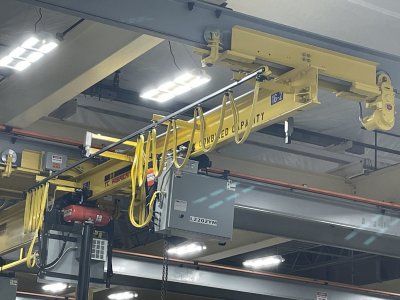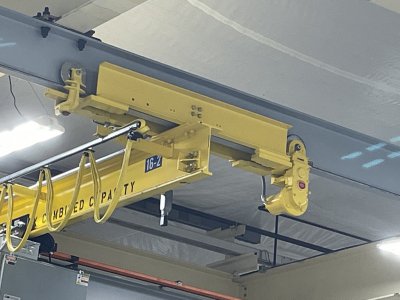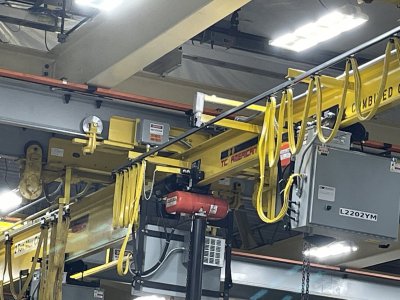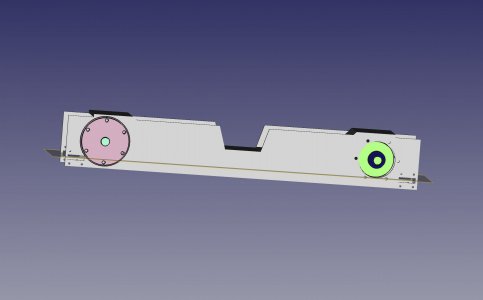- Joined
- Feb 25, 2021
- Messages
- 3,130
IPlanning here on pre-drilling my bridge for two mounting points (basically 8' spacing) for such a shaft. Again not sure I'll use them. But having them and not needing them beats needing and not having. Anything drilled into the bridge would be on/near the neutral axis of the web and relatively small holes. The chain/sprocket approach had occurred to me but I'm really only at the point of facilitating motor/shaft as a potential rather than a requirement.I decided to go down the route of running a shaft from one truck to the other on the one getting built up here. That shaft needs to be supported at several points, or be a pretty stout shaft. However, rather than drive the wheel directly the shaft drives a sprocket on each end, with roller chain run down each rail. It was the cheapest way I could come up with to drive/clock the trucks. $80 for chain, CNC milled sprockets, etc. Adding a motor later would be easy.
The big advantage was being able to use off the shelf rollers. As you're finding out bearings for that sort of load aren't easy/cheap to find. What ended up in the one here are 12,000 lb rated, but are smaller in diameter than what would have preferred. But at $80 ea, they didn't break the bank.
More complex, but the chain clocking should allow the lift hook to get within about 16"-18" of the wall.
I'm thinking I'll want the guide bearings (track rollers) on the trucks regardless. With a free-standing frame I want to ability to accomodate flex/motion in the frame so the bearings keep things from binding. I may well be overthinking it, which isn't a bad thing in this case.
Last edited:





